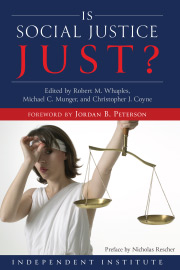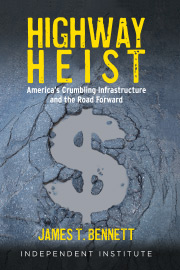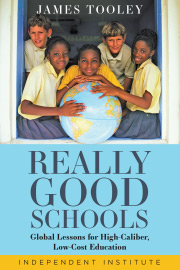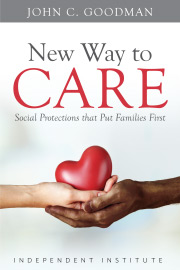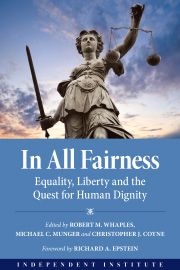Consumption Spending Is 70 Percent of GDP — So What?
It must be a condition of employment that a journalist who writes about the current recession include in his article the statement, “consumption makes up more than two-thirds of the economy” or “consumption spending accounts for 70 percent of GDP.” This seemingly simple, factual statement, however, is nearly always intended to carry some explanatory weight, and on occasion the writer spells out this explanation by adding a statement such as, “unless consumers begin to open their wallets and spend more, recovery from the current recession will be impossible.”
At first glance, this journalistic commonplace appears to make sense. Anyone can understand that, say, a store at the mall will not hire additional employees unless its sales increase enough to justify the additional expense. Hence, would-be employees will remain unemployed; they will purchase fewer consumption goods than they would have purchased if they had jobs; and therefore the stores will not hire more workers; and so forth. The circle of a theory of income and employment seems to be closed, and thus an explanation provided for the lingering recession: consumers are not spending enough.
One does not need a Ph.D. in economics, however, to discover that something must be wrong with this way of thinking about prosperity and recession. Checking the national economic accounts produced by the Commerce Department’s Bureau of Economic Analysis (Table l.l.6), one finds, for example, that the most recent quarterly peak in real personal consumption expenditure occurred in the fourth quarter of 2007. This spending ($9,244 billion at an annual rate) equaled 69.2 percent of contemporary GDP ($13,364 billion at an annual rate)—where the data are expressed in dollars of 2005 purchasing power. Real GDP did not fall significantly until the third quarter of 2008. When it reached its trough in the second quarter of 2009, it had fallen to $12,810 billion, down about 4 percent. At that time, real personal consumption spending was $9,117 billion, down only 1.4 percent, and equal to about 71 percent of GDP. Thus, as usual over the course of a boom and bust, consumption spending varied proportionately less than GDP as a whole.
As every student of the business cycle learns early on, the most variable part of aggregate expenditure is private investment. When real gross private domestic investment peaked, in the first quarter of 2006, it was $2,265 billion, or 17.5 percent of GDP. When it hit bottom in the second quarter of 2009, it had fallen by 36 percent to $1,453 billion, or 11.3 percent of GDP. (Deducting investment expenditures aimed at compensating for depreciation of the private capital stock [Table 1.7.6], we find that real net private investment – the part that contributes to economic growth—in the most recent quarter was only one-third as great as it was at its peak in early 2006.) The ups and downs of the business cycle are obviously driven not by consumption spending, but by investment spending.
In the second quarter of 2010, real personal consumption was $9,270 billion, or slightly above its previous peak, at an all-time high. If stimulating consumption spending were the key to an economic revival, we would have achieved one already. And if we accepted real GDP as an adequate index of the economy’s health, we might affirm that conclusion, given that in the most recent quarter, real GDP was only 1.3 percent below its previous peak. With the official unemployment rate stuck near 10 percent and millions of people having left the labor force or having settled for part-time work, however, that conclusion is hard to swallow.
The vulgar Keynesian focus on consumption unfortunately tempts politicians to approve “stimulus” measures aimed at pumping up this part of total spending—measures such as long extensions of unemployment insurance benefits, aid to state and local governments to help them avoid personnel reductions, and increases in the salaries of federal employees. Some economists even go so far as to single out such measures for special praise on the grounds that because such payments are most likely to give rise to consumption spending in the near term, they have the greatest “multiplier effect.”
Such arguments, however, fail to grasp the true nature of the boom-bust cycle, especially the central role of investment spending in driving it—and, more important, in driving the long-run growth of real output that translates into a rising standard of living for the general public. Politicians, if they truly wish to promote genuine, sustainable recovery and long-run economic growth, need to focus on actions that will contribute to a revival of private investment, not on pumping up consumption. In the most recent quarter, real gross private domestic investment was running at an annual rate more than 20 percent below its previous peak and, as noted, real net private investment was fully two-thirds below its previous peak.
To bring about this essential revival of investment, the government needs to put an end to actions that threaten investors’ returns and create uncertainty that paralyzes their undertaking of new long-term projects. Gigantic measures such as the recently enacted health-care legislation and the financial-reform law, which entail hundreds of new regulations whose specific content, enforcement, and costs are impossible to forecast with confidence, contribute to “regime uncertainty” and thereby encourage investors to hold large cash balances or to park their funds in short-term, low-yield, less risky securities. Such investments cannot support genuine recovery and sustained long-run growth.
In sum, our crying need at present is for a robust revival of private long-term investment. Consumption-oriented government “stimulus” programs, at best, only ensure a protracted period of economic stagnation.

